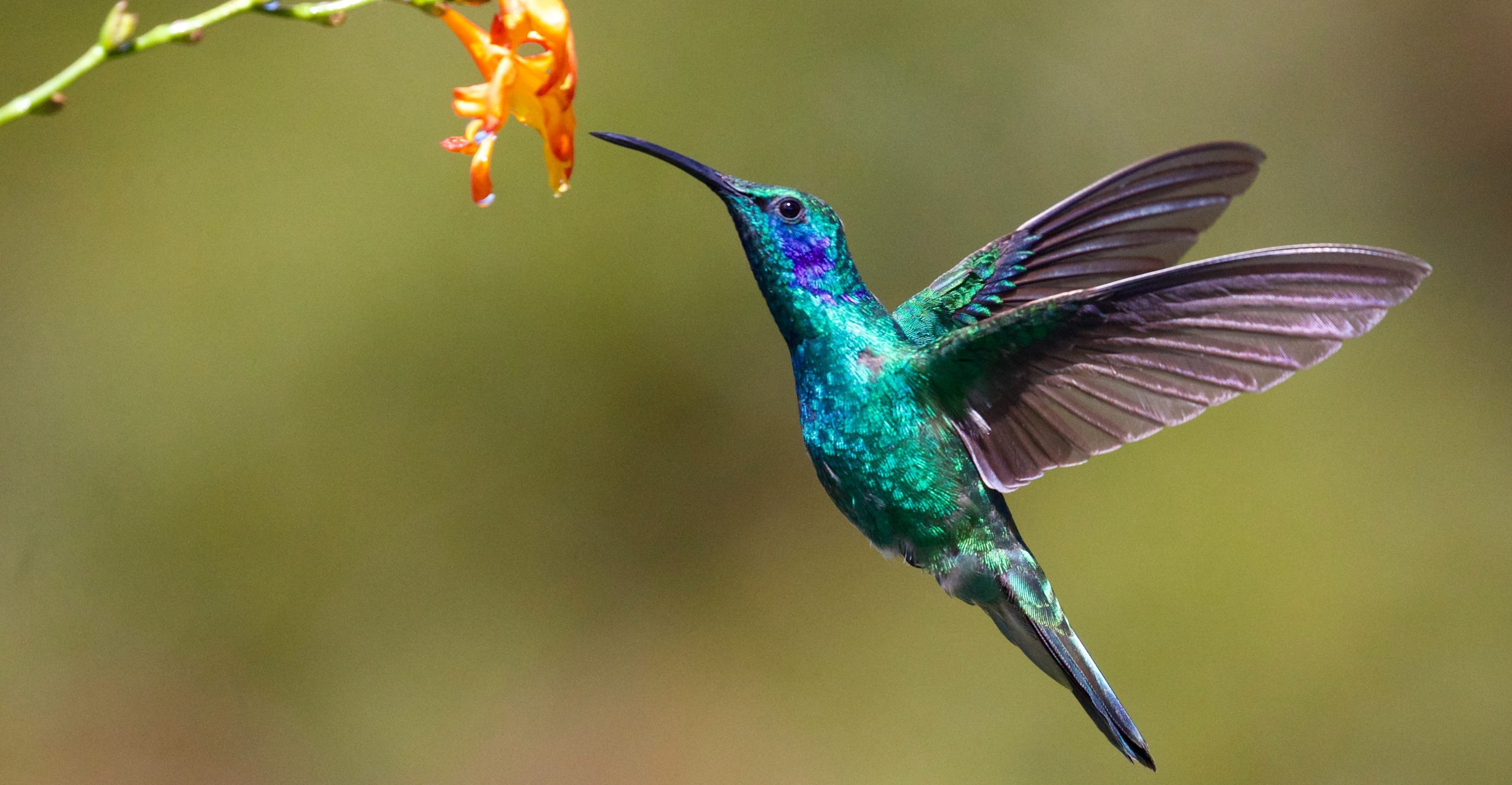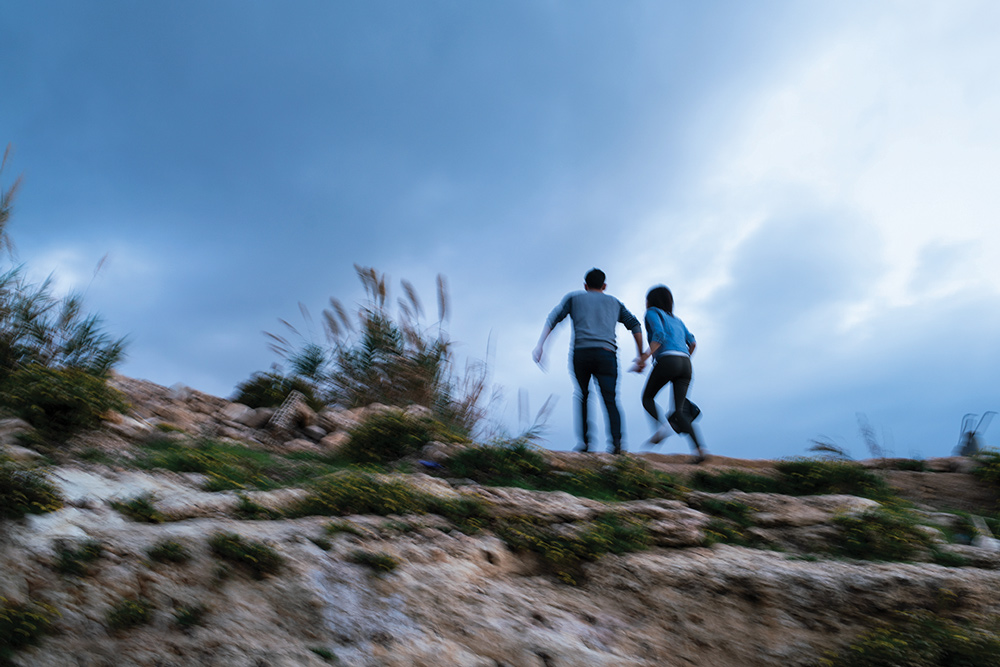
A young couple races up a hillside near Pigeon Rocks on Beirut’s westernmost tip. Photo by Nichole Sobecki / VII
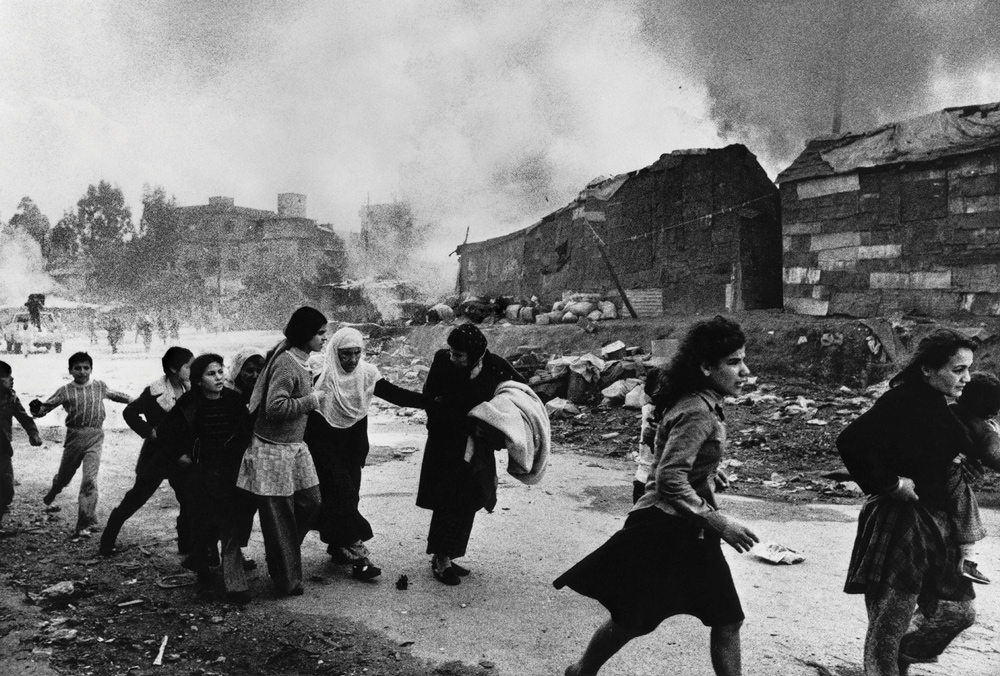
Palestinians flee attack. Up to 1,500 Palestinians died in the Karantina massacre by Christian Falangist gunmen. Beirut, Lebanon, 1976. Photo by Don McCullin / Contact Press Images
To make progress towards peace, you have to build trust by going onto the other side’s turf rather than demanding that they come to meet you in grand government buildings. Shared risks can foster a bond.
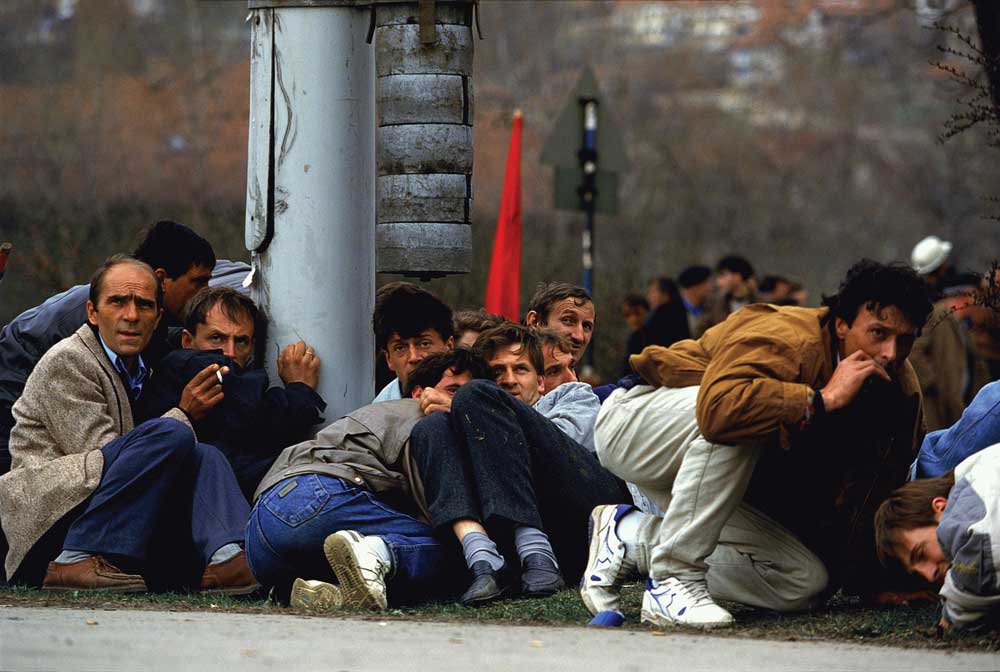
Bosnians dodge sniper fire at a peace rally in Sarajevo, Bosnia. They had been calling for the preservation of a multiethnic society when gunmen from a radical Serb political party opened fire on the crowd. Later that day the crowd stormed the parliament building in protest. April 6, 1992. Photo by Ron Haviv / VII
Experience suggests that two factors need to be in place if peace negotiations are to be successful. The first is what academics call a mutually hurting stalemate—that is, not just a stalemate, but one in which both sides perceive that they are paying a price and want the conflict to stop. . . . The second determining factor is having the right leadership.
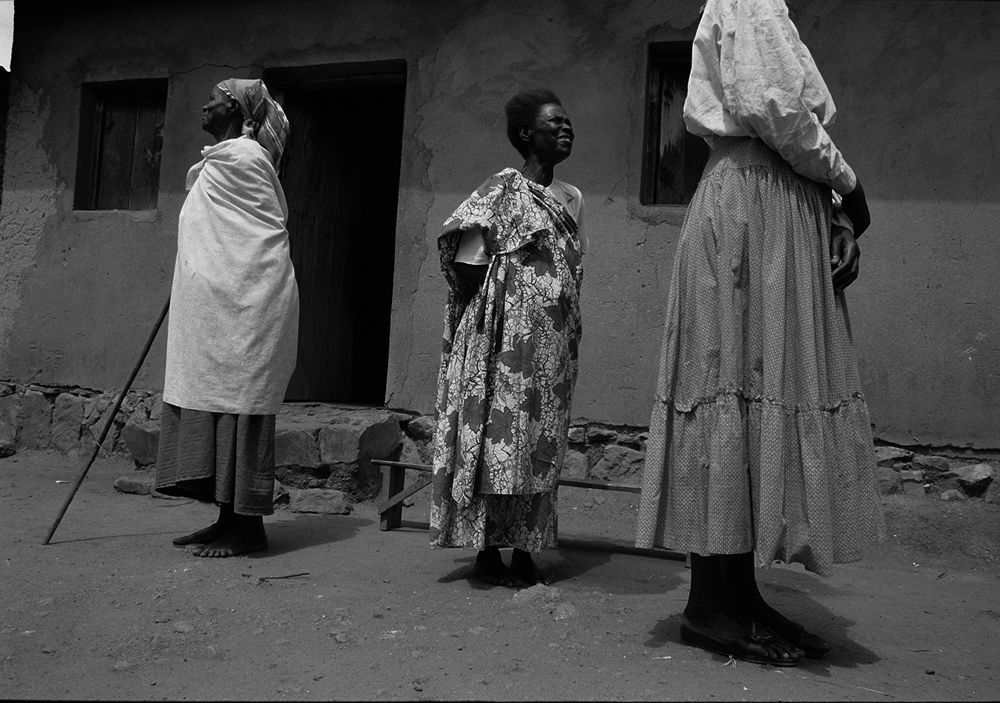
In 1996 Laurencie Nyirabeza (top photo) was shocked to find that her former neighbour, the génocidaire Jean Girumuhutase (bottom photo), had returned to live in her village. She claims Girumuhatse killed 10 members of her family, including her children and grandchildren. He did not deny the claims. She and Girumuhatse were both interviewed by journalist Philip Gourevitch with Picone. When Picone returned later on this trip, Nyirabeza had died. Her surviving granddaughter said that her grandmother was never able to move on with her life and always resented the proximity of Girumuhatse. Photo by Jack Picone
Alice Mukarurinda and the génocidaire Emanuel Ndayisaba. Ndayisaba admits to killing dozens of people during the genocide. Alice is just one of his victims, left for dead in a swamp after he cut off her hand. Ndayisaba was imprisoned for his crimes, but under the laws of gacaca, the local courts set up to encourage truth and reconciliation, he confessed to his murders and was released. He later recognised Alice and admitted to her it was he who had tried to kill her that day in the swamp. In an unlikely partnership they have both reconciled and now work in a restorative group teaching reconciliation within the community. Photo by Jack Picone
Peace is not an event, the signing of an agreement, but a process which takes time. If there is a process in place, people have hope that there will be a settlement. But if the agreement collapses and there is no process, violence soon fills the vacuum. Former Israeli Prime Minister, the late Shimon Peres, used to like to say that the solution to the Middle East conflict was fairly clear in terms for land, of refugees, and even of Jerusalem, but the problem was that there was no process to get there. The good news, he said, was that there was light at the end of the tunnel. The bad news was that there was no tunnel. The job of peacemakers is to build that tunnel.
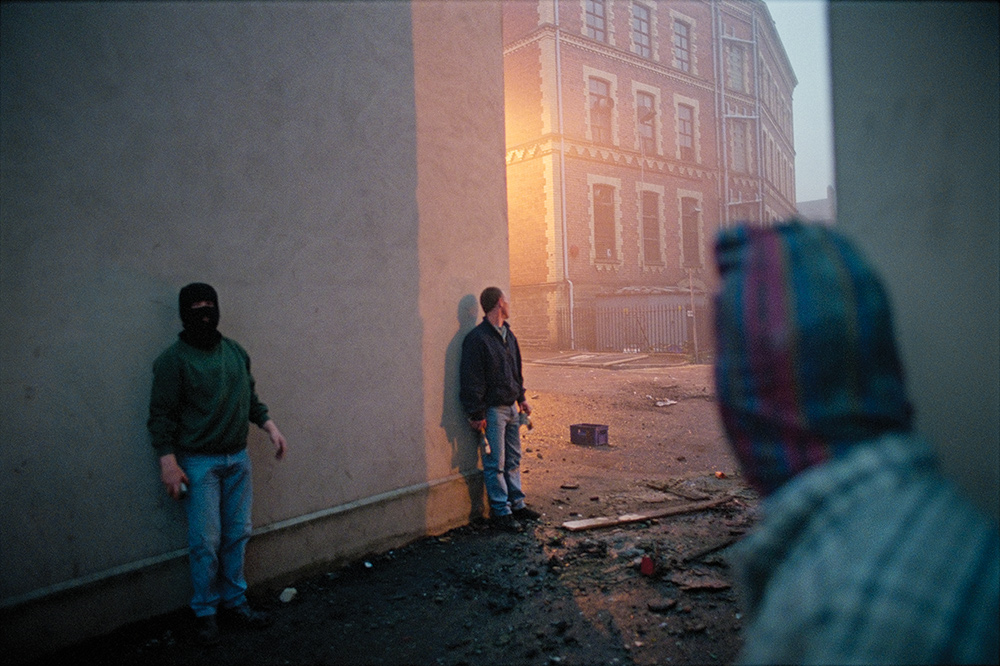
Derry, North of Ireland, 1996. Photo by Gilles Peress

Near Ardoyne, West Belfast, North of Ireland, 1994. Photo by Gilles Peress
